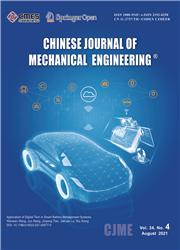盾构机掘进过程地层识别的基于投票特征选择方法
IF 4.5
2区 工程技术
Q1 Engineering
引用次数: 0
摘要
摘要盾构机是目前地下隧道施工的主要工具。由于地下施工环境的复杂性和多变性,在隧道施工过程中需要实时准确地识别地面,根据地质条件匹配和调整隧道参数,以确保施工安全。与传统的分层钻井取样地层识别方法相比,基于施工数据的实时地层识别方法具有成本低、精度高等优点。由于超大直径泥水平衡盾构机的传感器数据量巨大,为了平衡对地层的识别时间和识别精度,需要对数百个传感器采集的多元数据特征进行筛选。针对这一问题,本文提出了一种基于投票的特征提取方法(VFS),该方法集成了多种特征提取算法FSM,所有特征提取算法中每个特征的出现频率是投票的依据。同时,为了验证该方法的广泛适用性,采用几种常用的分类模型对得到的有效特征数据进行训练和测试,并以模型精度和识别时间作为评价指标,得到了与VFS结合最优的分类。6种不同地质构造的盾构机数据实验结果表明,VFS结合不同分类算法得到的13个特征的平均准确率为91%;其中,随机森林模型耗时最短,识别准确率最高,达到93%,与VFS的兼容性最好。因此,本文提出的VFS算法对于隧道施工过程中的地层识别具有较高的可靠性和广泛的适用性,并且可以与多种分类器算法相匹配。将盾构机数据特征中选取的13个特征与随机森林相结合,可以很好地实现盾构隧道施工地层环境的识别,进一步为地下工程施工提供理论指导。本文章由计算机程序翻译,如有差异,请以英文原文为准。
Vote-Based Feature Selection Method for Stratigraphic Recognition in Tunnelling Process of Shield Machine
Abstract Shield machines are currently the main tool for underground tunnel construction. Due to the complexity and variability of the underground construction environment, it is necessary to accurately identify the ground in real-time during the tunnel construction process to match and adjust the tunnel parameters according to the geological conditions to ensure construction safety. Compared with the traditional method of stratum identification based on staged drilling sampling, the real-time stratum identification method based on construction data has the advantages of low cost and high precision. Due to the huge amount of sensor data of the ultra-large diameter mud-water balance shield machine, in order to balance the identification time and recognition accuracy of the formation, it is necessary to screen the multivariate data features collected by hundreds of sensors. In response to this problem, this paper proposes a voting-based feature extraction method (VFS), which integrates multiple feature extraction algorithms FSM, and the frequency of each feature in all feature extraction algorithms is the basis for voting. At the same time, in order to verify the wide applicability of the method, several commonly used classification models are used to train and test the obtained effective feature data, and the model accuracy and recognition time are used as evaluation indicators, and the classification with the best combination with VFS is obtained. The experimental results of shield machine data of 6 different geological structures show that the average accuracy of 13 features obtained by VFS combined with different classification algorithms is 91%; among them, the random forest model takes less time and has the highest recognition accuracy, reaching 93%, showing best compatibility with VFS. Therefore, the VFS algorithm proposed in this paper has high reliability and wide applicability for stratum identification in the process of tunnel construction, and can be matched with a variety of classifier algorithms. By combining 13 features selected from shield machine data features with random forest, the identification of the construction stratum environment of shield tunnels can be well realized, and further theoretical guidance for underground engineering construction can be provided.
求助全文
通过发布文献求助,成功后即可免费获取论文全文。
去求助
来源期刊

Chinese Journal of Mechanical Engineering
ENGINEERING, MECHANICAL-
CiteScore
5.60
自引率
4.80%
发文量
3097
审稿时长
8 months
期刊介绍:
Chinese Journal of Mechanical Engineering (CJME) was launched in 1988. It is a peer-reviewed journal under the govern of China Association for Science and Technology (CAST) and sponsored by Chinese Mechanical Engineering Society (CMES).
The publishing scopes of CJME follow with:
Mechanism and Robotics, including but not limited to
-- Innovative Mechanism Design
-- Mechanical Transmission
-- Robot Structure Design and Control
-- Applications for Robotics (e.g., Industrial Robot, Medical Robot, Service Robot…)
-- Tri-Co Robotics
Intelligent Manufacturing Technology, including but not limited to
-- Innovative Industrial Design
-- Intelligent Machining Process
-- Artificial Intelligence
-- Micro- and Nano-manufacturing
-- Material Increasing Manufacturing
-- Intelligent Monitoring Technology
-- Machine Fault Diagnostics and Prognostics
Advanced Transportation Equipment, including but not limited to
-- New Energy Vehicle Technology
-- Unmanned Vehicle
-- Advanced Rail Transportation
-- Intelligent Transport System
Ocean Engineering Equipment, including but not limited to
--Equipment for Deep-sea Exploration
-- Autonomous Underwater Vehicle
Smart Material, including but not limited to
--Special Metal Functional Materials
--Advanced Composite Materials
--Material Forming Technology.
 求助内容:
求助内容: 应助结果提醒方式:
应助结果提醒方式:


